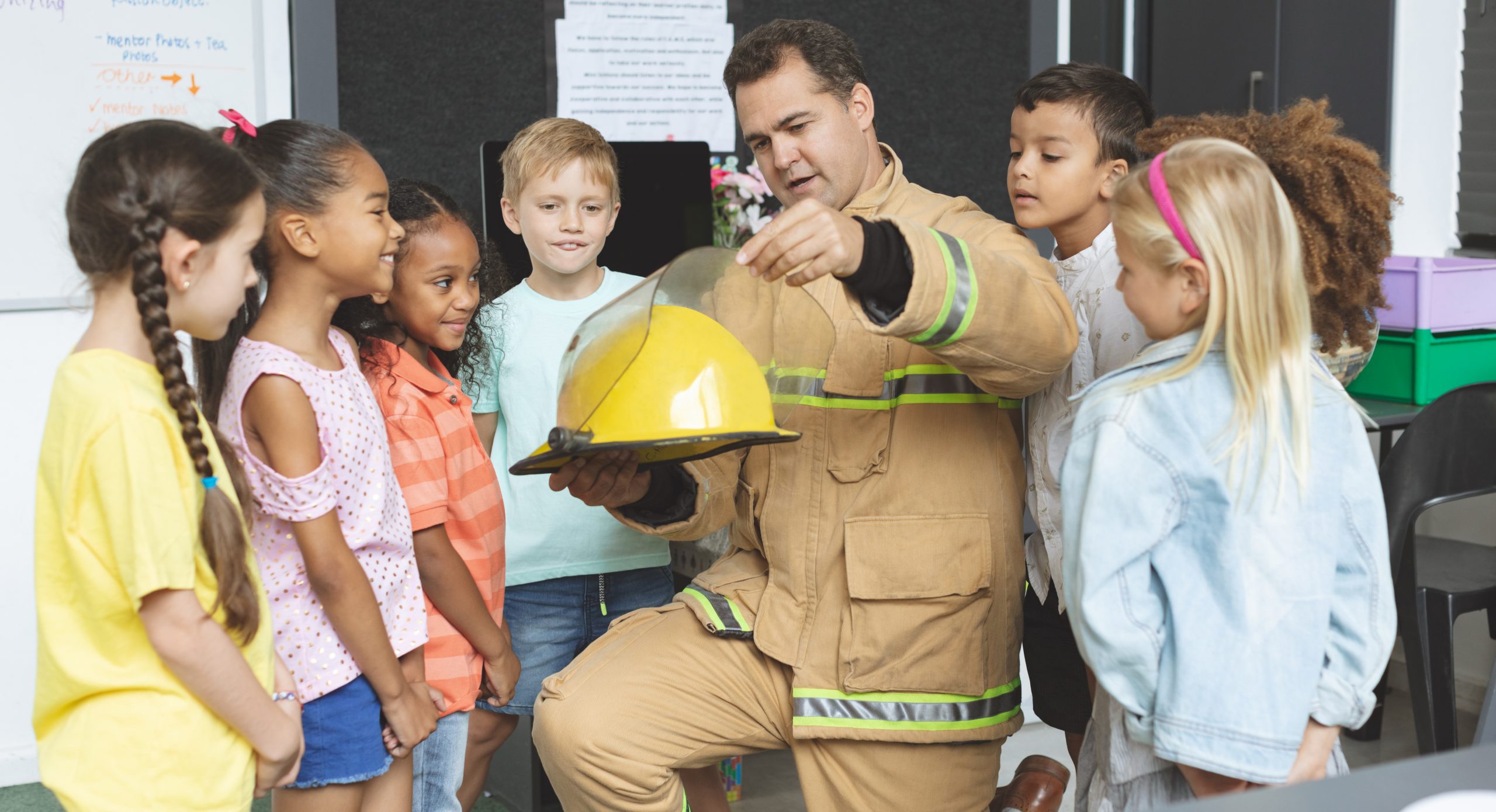In a fire, seconds can mean the difference between a safe escape and tragedy. Fire safety education is for everyone: infants/toddlers, school-aged children, teenagers, adults, and the elderly. We are all at risk in fires, making it important for every member of your family to take some time to make sure they understand how to stay safe in case of a fire. Check out these four ways to make fire safety a priority in your family.
Make an Escape Plan
- Find two ways to get out of each room.
- Practice feeling your way out of the house.
- Teach children not to hide.
- Assign your meeting place.
- Practice your drill at least two times a year:
- Push the test alarm.
- Get everyone outside, close door behind you.
- If there is smoke, get down low and get out.
- Get outside fast and stay outside.
- Go to your meeting place.
Keep Smoke Detectors Up-to-Date
- Change batteries once a year.
- All smoke alarms need to be replaced after 10 years.
- Test alarms monthly.
- Have smoke alarms on every level of your home.
- Have a smoke alarm in each bedroom and outside each sleeping area.
- Never disable a smoke alarm while cooking!
Check Carbon Monoxide (CO) Alarms
- Change batteries once a year.
- Test alarms monthly.
- Most will have an end-of-life alarm which means you need a new CO alarm.
- If CO alarm sounds, get outside to fresh air, call 9-1-1.
- Keep vents (dryer, furnace, stove, and fireplace) clear of debris.
- Generators should always be in a well-ventilated area — outside, away from windows, doors, or vents.
- Gas and charcoal grills can produce CO — only use outside.
Place at Least One Fire Extinguisher in your Home
- Every home should have a multipurpose fire extinguisher.
- Only use for small, confined fires, and when you know everyone is safe and the fire is not growing.
- To operate a fire extinguisher, remember the word PASS:
- Pull the pin. Hold the extinguisher with the nozzle pointing away from you, and release the locking mechanism.
- Aim low. Point the extinguisher at the base of the fire.
- Squeeze the lever slowly and evenly.
- Sweep the nozzle from side to side.
There are only seconds in fires that can make a difference between escape and tragedy. “Hear a beep, get on your feet! Get out and stay out! Call 9-1-1 from outside.” (NFPA.org)
For more fire safety tips, check out the National Fire Prevention Association. There is also an attached Fire safety activity book for kids provided by FEMA.











Thank you for bringing it up!
I also want to remind you and your readers to clean the space around heating units. Lint and dust are highly flammable, and even a little spark is enough to make them catch fire. You can avoid dust buildup by vacuuming inside and around your furnace every month. For wall furnaces, clean inside the burner compartments. Clean this area at least once a month during winter to avoid lint buildup. For natural gas furnaces, the flame should burn blue. Orange or yellow flames may mean your furnace needs cleaning or adjusting by a professional.